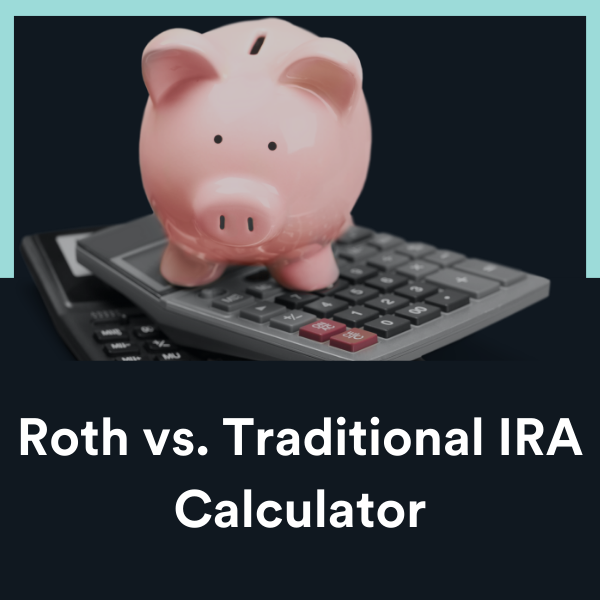Planning for retirement

What is retirement planning?
Retirement planning is the process of setting income goals for your post-work life and creating a strategy to meet them. It involves reviewing your current finances, estimating future needs, and building a plan to ensure long-term financial stability. Understanding retirement planning is essential for maintaining your lifestyle, covering healthcare costs, and enjoying your later years without financial stress. It helps you avoid relying solely on Social Security or uncertain income sources and gives you confidence about your financial future. Many people believe retirement planning is only for high earners or that it’s a one-time task. In reality, everyone benefits from planning, and it’s something that should be revisited regularly as your life and the economy change.

The retirement planning process
Crafting a retirement plan starts with setting clear goals and timelines. Think about the lifestyle you want, where you’ll live, how you’ll spend your time and when you hope to retire. Then, assess your current finances, including income, savings, investments and debt. Factor in potential income sources like Social Security, pensions, IRAs and 401(k)s. With this foundation, you can build a personalized strategy and adjust it over time to stay aligned with your goals.
Retirement accounts come in different forms, each with unique benefits. Traditional IRAs offer tax-deferred growth, while Roth IRAs allow for tax-free withdrawals in retirement. Money market accounts provide flexibility and steady interest, ideal for short-term savings. Trust accounts can help with estate planning and passing assets to loved ones. Choosing the right mix depends on your goals, timeline and tax situation.* A well-balanced approach can help you grow your savings and protect your future.
A strong retirement plan includes both saving and investing. Start by deciding how much you can set aside each month based on your goals and timeline. Then choose accounts that match your needs, like IRAs for long-term growth or money markets for short-term flexibility. Diversify your investments to balance risk and stability.* As your life changes, revisit your strategy to stay aligned with your retirement goals.
Healthcare is one of the most significant expenses in retirement. Planning ahead means understanding how Medicare works, what supplemental coverage you might need and how to prepare for long-term care costs. Building healthcare into your retirement budget helps protect your savings and ensures you can access the care you need without financial stress.
Frequently asked retirement questions
The earlier you start planning for retirement, the more financial security you can achieve. Ideally, beginning in your 20s or 30s allows your investments to benefit from the power of compound interest, which can significantly grow your savings over the decades. It’s important to remember that it’s never too late to start saving for retirement. Even if you’re in your 40s or 50s, taking steps like contributing to an employer-sponsored retirement plan or opening an IRA can make a significant difference in your retirement readiness. To see how your contributions could grow over time, you can use our retirement savings calculator to explore different savings scenarios and plan effectively for the future.
Determining how much you need for a comfortable retirement is highly individualized and depends on several factors, including your desired lifestyle, health considerations and long-term goals. A common rule of thumb suggests that you should aim to replace about 70 – 90% of your preretirement income annually. For example, if you earn $80,000 a year before retirement, you might need between $56,000 and $72,000 annually in retirement. However, personalized planning is crucial. Consider your expected expenses, such as travel, hobbies and healthcare, and use retirement calculators to get a clearer picture of your needs.
Understanding the differences between a traditional IRA and a Roth IRA is vital for effective retirement planning. A traditional IRA allows your investments to grow tax-deferred, meaning you won’t pay taxes on the earnings until you withdraw them in retirement, which can be beneficial if you expect to be in a lower tax bracket then. On the other hand, a Roth IRA is funded with after-tax dollars, allowing you to withdraw your contributions and earnings tax-free in retirement, which can be advantageous if you anticipate being in a higher tax bracket later. For example, if you expect to earn more in retirement, a Roth IRA could save you money on taxes in the long run.
A money market account is a type of savings vehicle that typically offers higher interest rates compared to regular savings accounts while providing limited check-writing privileges and debit card access. These accounts are ideal for short-term savings goals, such as building an emergency fund, or as part of a diversified retirement strategy where you might want to keep funds easily accessible yet still earn some interest. For example, you might allocate a portion of your retirement savings into a money market account to ensure liquidity while your other investments grow.
Trust accounts can play a significant role in retirement and estate planning by allowing you to specify how and when your assets are distributed after your passing. They can help protect your wealth from probate and ensure that your financial legacy is managed according to your wishes. For example, if you have minor children or dependents with special needs, a trust can provide financial support for their care while also offering tax benefits.* Establishing a trust can give you peace of mind knowing that your loved ones will be financially secure.
Planning for healthcare costs in retirement is crucial, as these expenses can significantly impact your overall financial health. Start by incorporating healthcare into your retirement budget, considering both Medicare and any supplemental insurance plans that may be necessary to cover gaps. Additionally, explore long-term care insurance, which can help cover costs associated with nursing homes or in-home care.
Paying off high-interest debt before retirement is generally advisable, as it can help enhance your cash flow and reduce financial stress during a time when you may be living on a fixed income. For example, eliminating credit card debt or personal loans can free up monthly income that can be redirected into savings or necessary expenses. Moreover, entering retirement with minimal debt can provide you with greater peace of mind and stability, allowing you to enjoy your retirement years without the burden of financial obligations.
Life changes — so should your retirement plan.
Revisit your goals, savings, and investments annually or after major life events. Staying flexible helps you stay on track.
*The information provided on this website and within Westerra Credit Union’s financial education resources is for educational and informational purposes only. It is not intended to provide, and should not be construed as, financial, investment, tax, legal, or healthcare advice.Westerra Credit Union does not offer or provide guidance on individual tax situations, legal matters, or healthcare decisions. You should consult with a qualified financial advisor, tax professional, attorney, or healthcare professional for advice specific to your personal circumstances.While we strive to ensure the accuracy and timeliness of the information presented, Westerra Credit Union makes no guarantees or warranties, express or implied, regarding the completeness, reliability, or suitability of any information, products, or services referenced herein.Your use of this website and participation in any financial education materials or programs signifies your acknowledgment and agreement that Westerra Credit Union is not liable for any losses or damages that may arise from reliance on the information provided.




